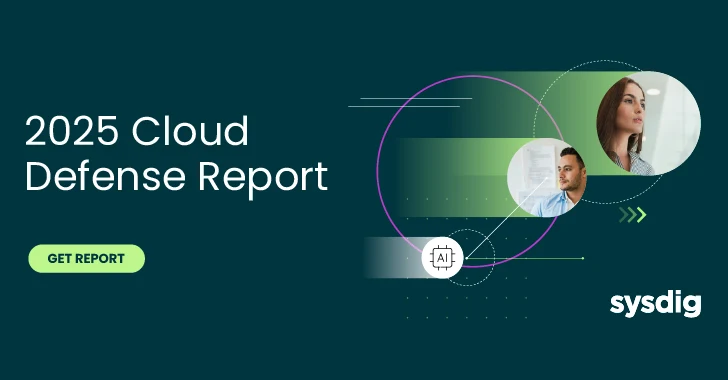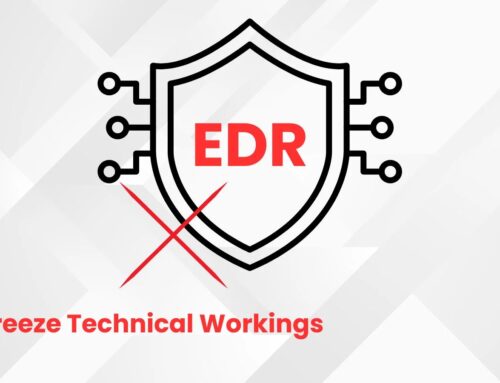
The AI-Powered Security Shift: What 2025 Is Teaching Us About Cloud Defense
The year is 2025. The cloud landscape, once a frontier of innovation, has fully matured into the battleground for enterprise security. Attacks aren’t just sophisticated; they’re hyper-accelerated, often leveraging the very technology designed to protect us. As Artificial Intelligence (AI) permeates every layer of business operations, security teams face an unprecedented triple burden: operationalizing AI securely, defending at AI speed, and countering AI-powered threats that execute in the blink of an eye. This shift redefines cloud defense, forcing a proactive and intelligent approach.
The AI Conundrum in Cloud Defense
AI’s integration into cloud infrastructure brings both immense opportunity and significant peril. On one hand, it offers unparalleled capabilities for anomaly detection, threat prediction, and automated response. On the other, it introduces new attack surfaces and amplifies the speed and scale of adversarial actions. Organizations are grappling with how to effectively secure this pervasive technology.
- Securing AI Throughout the Business: AI is no longer a siloed technology; it’s embedded in applications, data pipelines, business logic, and operational systems across the enterprise cloud. Securing AI means addressing vulnerabilities in machine learning models, ensuring data integrity for training sets, preventing model poisoning, and establishing robust access controls for AI services. This requires a deep understanding of AI model lifecycle management (MLOps security) and integrating security from the design phase.
- Leveraging AI for Smarter Defense: The sheer volume and velocity of threat data in cloud environments are overwhelming for human analysts. AI is becoming indispensable for real-time threat detection, correlating disparate signals, prioritizing alerts, and automating incident response. This includes AI-driven Security Information and Event Management (SIEM), Extended Detection and Response (XDR) platforms, and User and Entity Behavior Analytics (UEBA) tools that can identify subtle deviations indicative of compromise.
- Battling AI-Powered Threats: Adversaries are not static. They are increasingly employing AI to automate reconnaissance, bypass traditional defenses, generate highly convincing phishing campaigns, and launch polymorphic malware. These AI-driven attacks can adapt in real-time, execute complex kill chains within seconds, and exploit zero-day vulnerabilities with terrifying efficiency. For example, the emergence of AI-generated polymorphic malware could render traditional signature-based detection mechanisms obsolete, highlighting the need for behavioral analysis and AI-driven threat intelligence.
The Evolution of Cloud Attacks
Cloud attacks in 2025 are characterized by their speed and machine intelligence. Attackers are using AI to:
- Automate Exploitation: AI algorithms can rapidly scan for and exploit misconfigurations or vulnerabilities in cloud services. This might include automated discovery of open S3 buckets, misconfigured network access controls, or insecure APIs.
- Evade Detection: AI can help attackers learn and adapt to defensive measures, generating new attack vectors or subtly altering their attack patterns to avoid detection by traditional security tools.
- Personalize Social Engineering: AI-powered tools can craft highly personalized and contextually relevant phishing emails or social engineering attempts, significantly increasing their success rates.
- Accelerate Lateral Movement: Once inside a cloud environment, AI can assist in mapping the network, identifying valuable assets, and orchestrating rapid lateral movement to achieve their objectives before defenders can react.
Remediation Actions: Fortifying Cloud Defense in the AI Era
To withstand the evolving threat landscape, organizations must adopt a multi-faceted and AI-centric approach to cloud security.
1. Implement AI-Driven Cloud Security Posture Management (CSPM) and Cloud Workload Protection Platforms (CWPP):
Leverage AI-powered platforms to continuously monitor and enforce security policies across your cloud infrastructure. These tools can automatically detect misconfigurations, assess compliance against industry benchmarks, and identify vulnerable workloads. For example, a robust CSPM leveraging AI can identify a newly exposed database due to an automation script error and recommend immediate remediation, preventing a potential data breach.
2. Adopt Behavioral Analytics and Anomaly Detection:
Shift from signature-based detection to behavioral analysis. AI and machine learning models can establish baselines of normal user and system behavior within your cloud environment. Any deviation from these baselines, no matter how subtle, can trigger alerts. This is particularly effective against zero-day attacks or novel AI-powered threats that lack a known signature. Consider a scenario where a user account, typically accessing only specific AWS S3 buckets (e.g., related to CVE-2023-XXXXX), suddenly attempts to download large volumes of data from a different, unrelated bucket. AI-driven UEBA would flag this as anomalous.
3. Strengthen Identity and Access Management (IAM) with Adaptive Controls:
Implement AI-enhanced IAM solutions that provide adaptive authentication and authorization. This means access decisions are not static but are based on real-time risk assessments, user behavior, device posture, and location. For instance, if an access request comes from an unusual IP address or device, or deviates from a user’s typical access patterns, AI can trigger multi-factor authentication (MFA) or block the access entirely, even if the user provides correct credentials. Protecting against credential stuffing, often automated by AI, is critical here (relevant to vulnerabilities like CVE-2022-YYYYY if it involves weak authentication mechanisms).
4. Prioritize AI Model Security (MLSecOps):
Integrate security practices into the entire lifecycle of AI models. This includes securing training data, validating model integrity, protecting against adversarial attacks on models (e.g., data poisoning, model evasion), and ensuring the provenance and trustworthiness of AI outputs. Implement robust version control for models and continuously monitor their performance for signs of tampering or degradation.
5. Cultivate a Culture of Security Awareness and AI Literacy:
While AI tools are powerful, human vigilance remains paramount. Educate employees about the escalating sophistication of AI-powered phishing and social engineering attacks. Train security teams on the intricacies of AI and machine learning to understand how these technologies can be both weaponized and leveraged for defense. This includes understanding the potential for bias in AI models to prevent skewed threat detection.
Tools for AI-Powered Cloud Defense
Many solutions are emerging that leverage AI to enhance cloud security. Here are examples of categories and types of tools:
| Tool Category | Purpose | Example Link/Technology |
|---|---|---|
| Cloud Security Posture Management (CSPM) | Automated identification and remediation of cloud misconfigurations and compliance violations using AI for continuous monitoring. | Palo Alto Networks Prisma Cloud, Wiz, Orca Security |
| Cloud Workload Protection Platform (CWPP) | Protecting cloud workloads (VMs, containers, serverless) from threats using behavioral analytics and AI for anomaly detection. | CrowdStrike Falcon Cloud Workload Protection, Trend Micro Cloud One – Workload Security |
| Security Information and Event Management (SIEM) / Extended Detection and Response (XDR) | Aggregating, analyzing, and correlating threat data from various sources with AI to detect complex attacks. | Splunk Enterprise Security, Microsoft Defender XDR, Cortex XDR |
| User and Entity Behavior Analytics (UEBA) | Detecting insider threats and compromised accounts by establishing baseline user behavior and identifying deviations using AI. | Exabeam, Securonix |
| API Security Gateways & Runtime Protection | Protecting APIs against automated attacks (like those powered by AI) through continuous monitoring and behavioral analysis. | Akamai App & API Protector, Salt Security API Protection Platform |
Conclusion
The year 2025 serves as a stark reminder that the future of cloud security is inextricably linked with artificial intelligence. AI is not merely a tool but a fundamental force reshaping both the attack and defense landscapes. Organizations that embrace AI as a critical component of their security strategy – by securing AI systems, using AI to accelerate their defenses, and developing sophisticated countermeasures against AI-powered threats – will be best positioned to protect their valuable cloud assets. Failure to evolve with this shift means facing an increasingly asymmetrical battle, where adversaries leverage speed and machine intelligence to their advantage.





